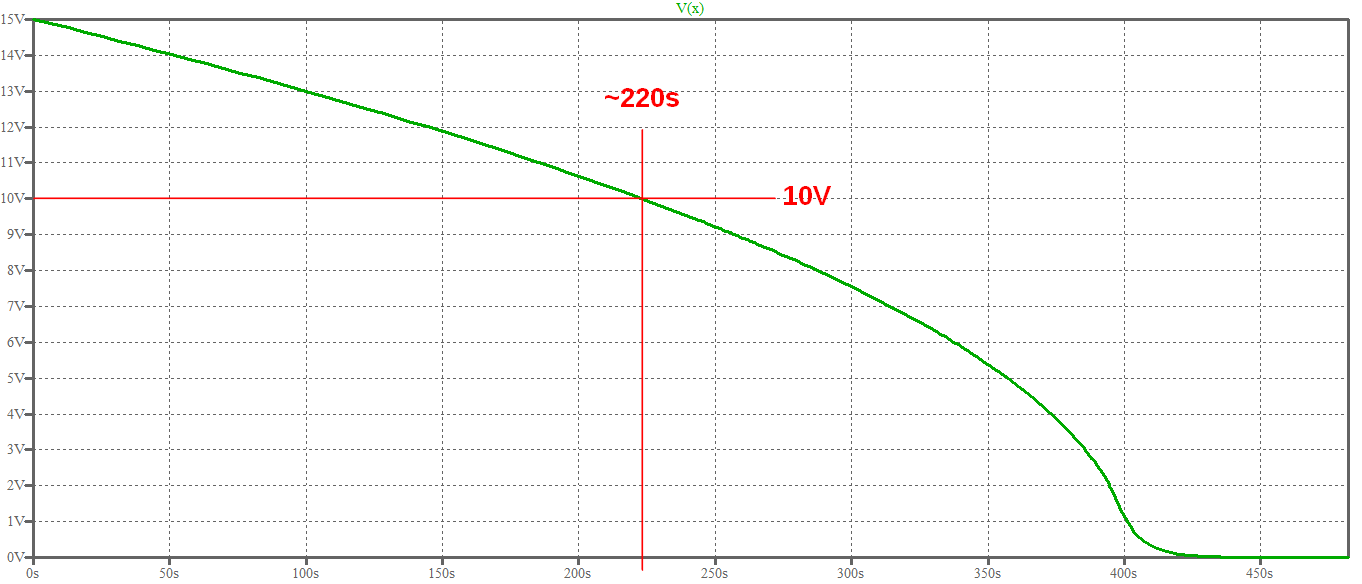If we model the setup with a capacitor in parallel with the load, and let \$i\$ be the current into the load and \$v\$ the voltage across the two, the circuit equations are:
$$
\left\{
\begin{aligned}
-i &= C \dfrac {dv} {dt}
\\[1 em]
v i &= P
\end{aligned}
\right.
\qquad \Leftrightarrow \qquad
\left\{
\begin{aligned}
-i &= C \dfrac {dv} {dt}
\\[1 em]
i &= \dfrac P v
\end{aligned}
\right.
$$
Where P is the constant power level. Putting the two together will give you this differential equation:
$$
C \dfrac {dv} {dt} = - \dfrac P v
\qquad \Leftrightarrow \qquad
v dv = - \dfrac P C dt
\qquad \Leftrightarrow \qquad
2 v dv = -2 \dfrac P C dt
$$
If we integrate starting at instant 0 where we assume a voltage \$v_0\$ is across the cap, we get:
$$
\int_{v_0}^{v} {2 v dv} = \int_0^t {-2 \dfrac P C dt}
\qquad \Leftrightarrow \qquad
v^2 - v_0^2 = -2 \dfrac P C t
$$
From which you can readily get a formula for the voltage and the time:
$$
t = \dfrac {C}{2 P} (v_0^2 - v^2)
\qquad
v = \sqrt{v_0^2 - \dfrac{2P}{C} t}
$$
If we want to take into account the ESR or other circuit elements the equation becomes nastier to solve, but for an initial guess it should be good enough.
Here is an LTspice simulation for the system. Notice that the load has been modeled by a behavioral current source that behaves as a constant power load only until its voltage reaches Vmin, then reverts to a constant resistance behavior. This is needed to avoid numerical instability in the simulation, since a true constant power source is not a physical device (with 0 volts draws infinite amperes).

And here are the results. You can notice the confirmation of the time-reversed square-root shape of the voltage Vx predicted theoretically above. The shapes of the signals change to the usual exponentially-decaying voltage and current when the load switches to constant resistance mode.

Here is a zoomed graph of the voltage, which shows the time value you are after:

Which is coherent with the value computed with the formula above:
$$
t_{shutdown} = t(v)\bigg|_{v=10V} = \dfrac {C}{2 P} (v_0^2 - v^2)\bigg|_{v=10V}
= \dfrac {1000F}{2 \times 280W} \left[(15V)^2 - (10V)^2\right] = 223.2 s
$$



